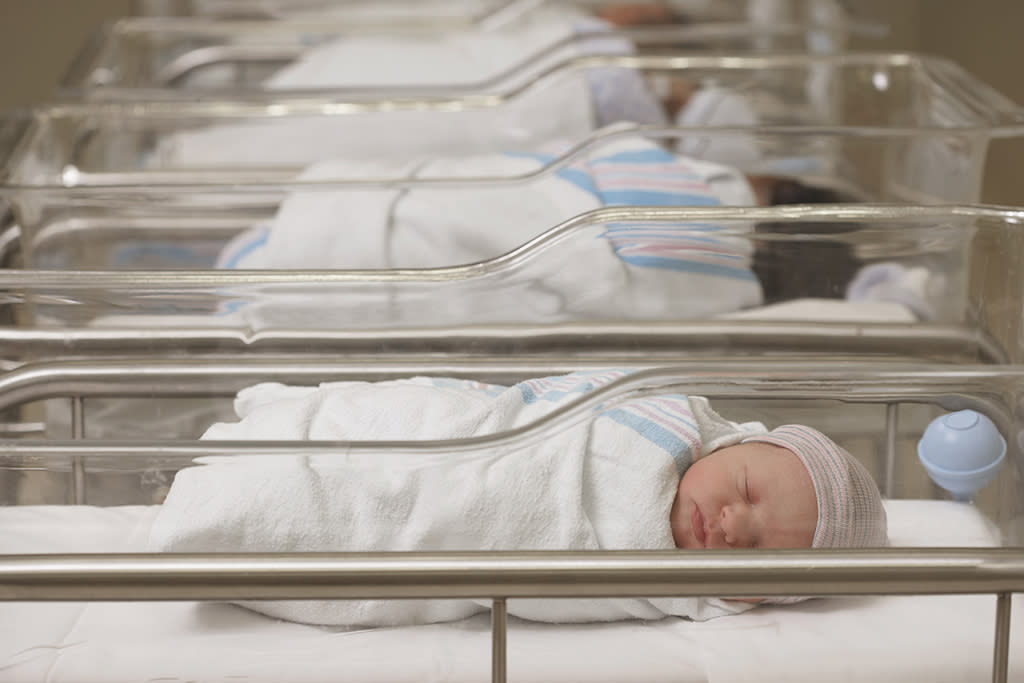U.S. birth rates have dropped by more than half — here’s why

Birth rates in the U.S. have dropped by more than half since the post-World War II baby boom and are at a record low, according to a recent report by the Centers for Disease Control and Prevention (CDC).
In 1957, during the baby boom at the time, the total fertility rate reached a peak of 3.77 births per woman, according to the CDC. But it’s been downhill from there. The total rate for Generation Xers plunged from 2.91 births per woman in 1965 to 1.84 in 1980. It picked up with Millennials and Generation Z, increasing to 2.08 births per woman in 1990 and then plateaued until the birth rate began to drop in 2007.
According to the CDC: “By 2018, the expected number of births per woman fell to 1.73, a record low for the nation.”
The report also concluded: “Except for 2006 and 2007, the TFR [total fertility rate] has been below the level needed for a generation to replace itself (2.10 births per woman) since 1971.”
Although it’s not clear why the U.S. birth rate is so low, experts say it’s likely multifactorial — from access to contraception and women delaying childbirth to the lack of affordable childcare and paid parental leave.
“Women are putting off childbearing to pursue their career or education or be single longer — it probably plays a major role,” Chantel Cross, MD, a reproductive endocrinologist and assistant professor of gynecology and obstetrics at Johns Hopkins Medicine, tells Yahoo Lifestyle. “We’re seeing younger women, in their 20s and even early 30s, not actively pursuing pregnancy or having children.”
Adds Lynn Westphal, ob/gyn and director of the Stanford Fertility Preservation Program: “Women are having their children later so they’re not having as big a family related to that.”
Cross notes that access to fertility treatments, such as IVF, and preservation, such as egg freezing, also “gives them an even bigger window before they actually start to pursue childbearing.”
Although data on contraceptive use has remained stable, Cross says that many women are choosing longer-acting contraception, such as IUDs (intrauterine devices), which are “much more reliable than condoms or pills” in terms of preventing unintended pregnancies.
But the drop in birth rates isn’t all bad news. Teen pregnancies — which are at a record low in the U.S. — likely account for some of the decline.
And while fewer women in their 20s and early 30s may be having children, CDC data comparing 2018 to 2019 birth rates found that the rates have gone up in women ages 35 to 39 and ages 40 to 44.
So what effect does a low birth rate have on the country? Experts say that it can lead to a larger aging population to care for (especially now that people, in general, are living longer compared to 40 years ago) and fewer young people in the workforce. A smaller amount of young workers can, in turn, lead to slower economic growth. According to Business Insider, which looked at the drop in fertility rates back in 2016: “We are beginning to see a substantial imbalance in the ratio of elderly dependents to working-age people, which will only intensify over the coming decades.”
Westphal tells Yahoo Lifestyle that the workforce is going to be “very different” because of this growing imbalance. “It may put some more burden on the younger generations, especially if there are not as many,” she says.
She adds: “People are living longer and having smaller families. In the past, you had multiple children who could help care for aging parents. If that burden is just on one child, it’s definitely going to create a different dynamic. But I don’t think we really know the long-term impact it’s going to have.”
Read more from Yahoo Lifestyle:
Legalizing marijuana may lead people to have more sex, says study — but there’s a downside
A 4-year-old has gone blind from the flu: How often does this happen?
Why women are more prone to serious complications from drinking alcohol
Follow us on Instagram, Facebook and Twitter for nonstop inspiration delivered fresh to your feed, every day.


